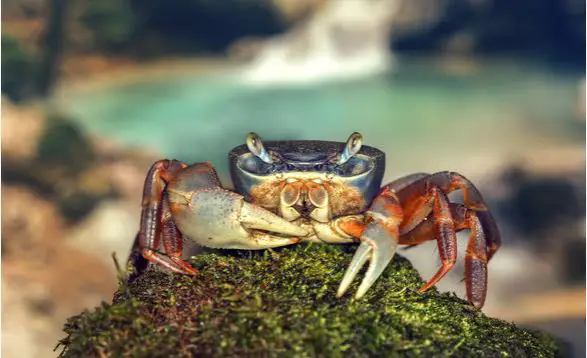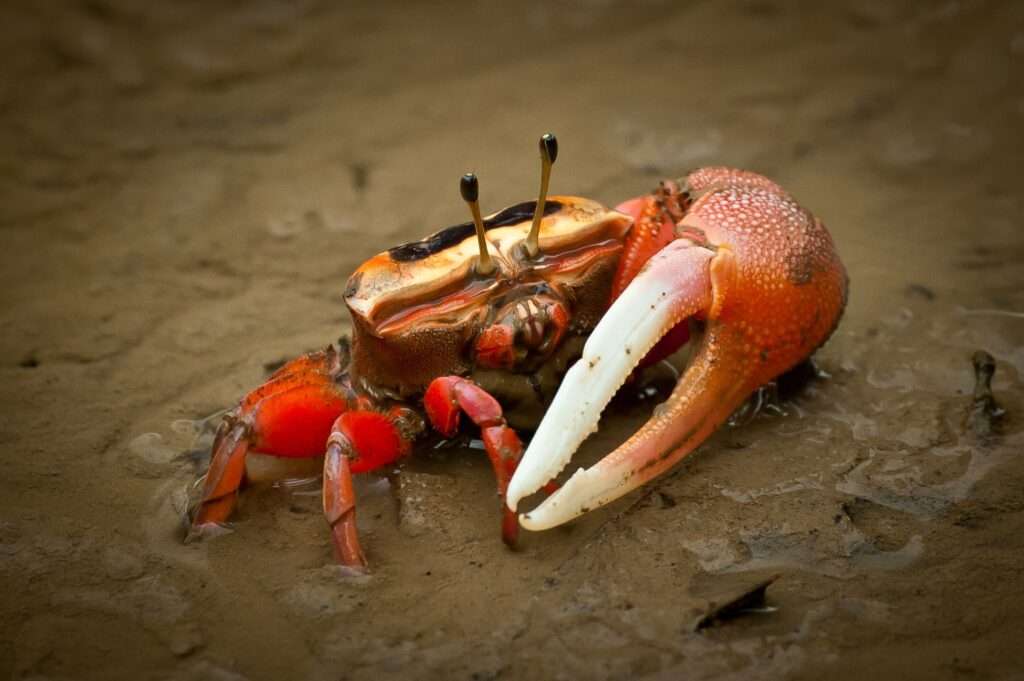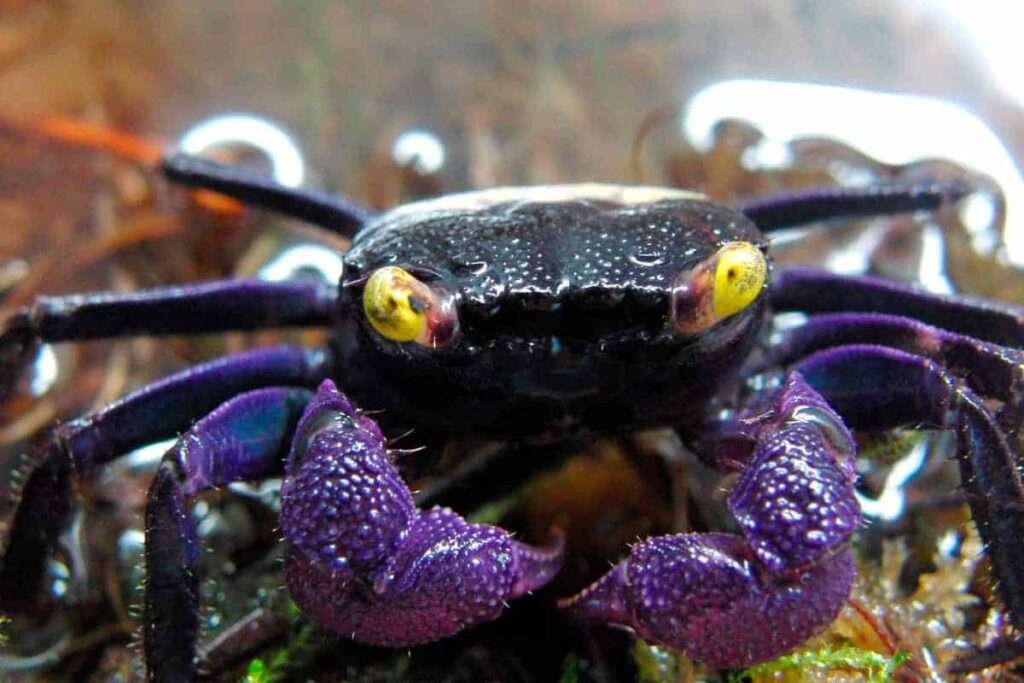
Because they are partially aquatic, rainbow crabs are wonderful pets that you can enjoy both in and out of the water. Along with being visually attractive, they have eyes that resemble goggles and bright hues. Although caring for Rainbow Crabs is not very challenging, they do require a specialized tank and either a paludarium or a tank with both aquatic and terrestrial components.
Appearance
With a carapace that is purple and blue and legs and claws that are orange and red, rainbow crabs live up to their name and have vibrant color, especially when they are young and after they molt.
They have a faded yellowish tinge and a fading color before and after they molt, though you may also notice some red dots.
Because the female has a bigger abdomen—hey, she’s creating baby crabs in there—you can tell the males from the females. The color of the males is much more noticeable than the females.
We stated that they can grow to a maximum height of 4 inches (7-12 cm) and a maximum weight of 3.4 to 10.25 ounces in captivity (96-290 g).

Habitat
As previously mentioned, Rainbow Crabs require freshwater or brackish water as well as a paludarium setup to meet their terrestrial and aquatic demands. It’s essential to supply the right proportion of water and land in the home environment. The Rainbow Crab must be able to immerse in water, but if it cannot surface, it will drown. They require roots, plants, and rocks for the terrestrial portion, as well as a thick layer of damp sand for burrowing. For a robust Rainbow Crab, strive for a 50/50 balance of aquatic and terrestrial components.
Feed
As omnivores, rainbow crabs will eat almost anything you give them, although the majority of their food is plants, fruit, and carrion, or garbage.
Vegetables and calcium are both excellent dietary supplements for them.
How are Rainbow Land Crabs kept?
For one Rainbow Land Crab, you will need a glass or plastic tank (plastic is less expensive) with a floor space of at least 30 cm. This species can be kept in groups, however it is recommended that you maintain them in larger cages with lots of hiding places.
They would dig burrows in the mud near the water’s edge in their natural habitat. You can use a sand/soil blend or Exo Terra Riverbed Sand. Put stones, cork bark, and other materials as hides in your enclosure with at least 2 inches, preferable 3-4 inches, of the substrate.
There isn’t much information available regarding the ideal temperature range for Rainbow Land Crabs. Ours are kept in a warm reptile room with a temperature range of 20 to 24 C. Despite what we have been told, UV sunlight does bring out their colors and may be helpful when they shed their exoskeleton.
Table





